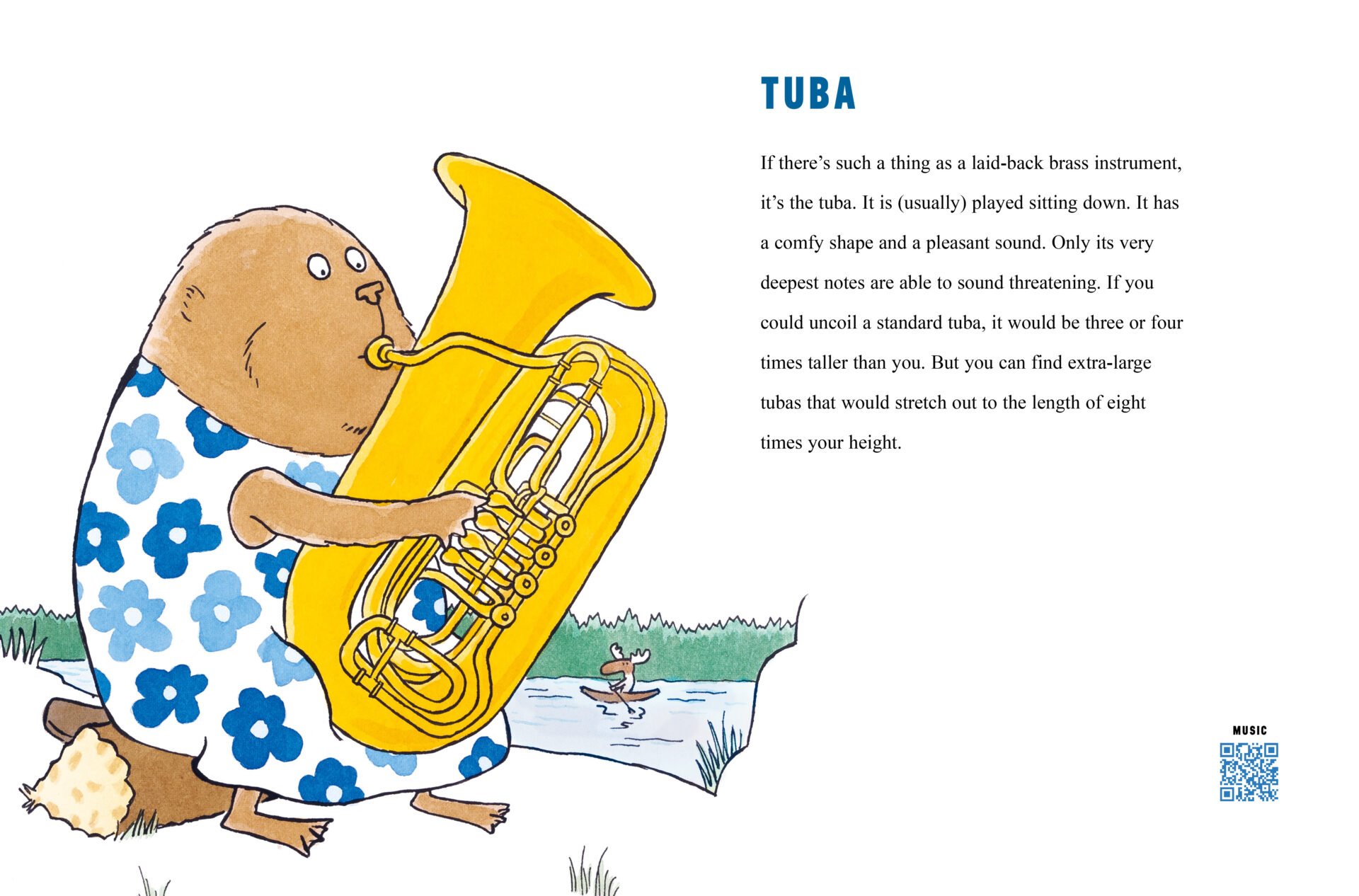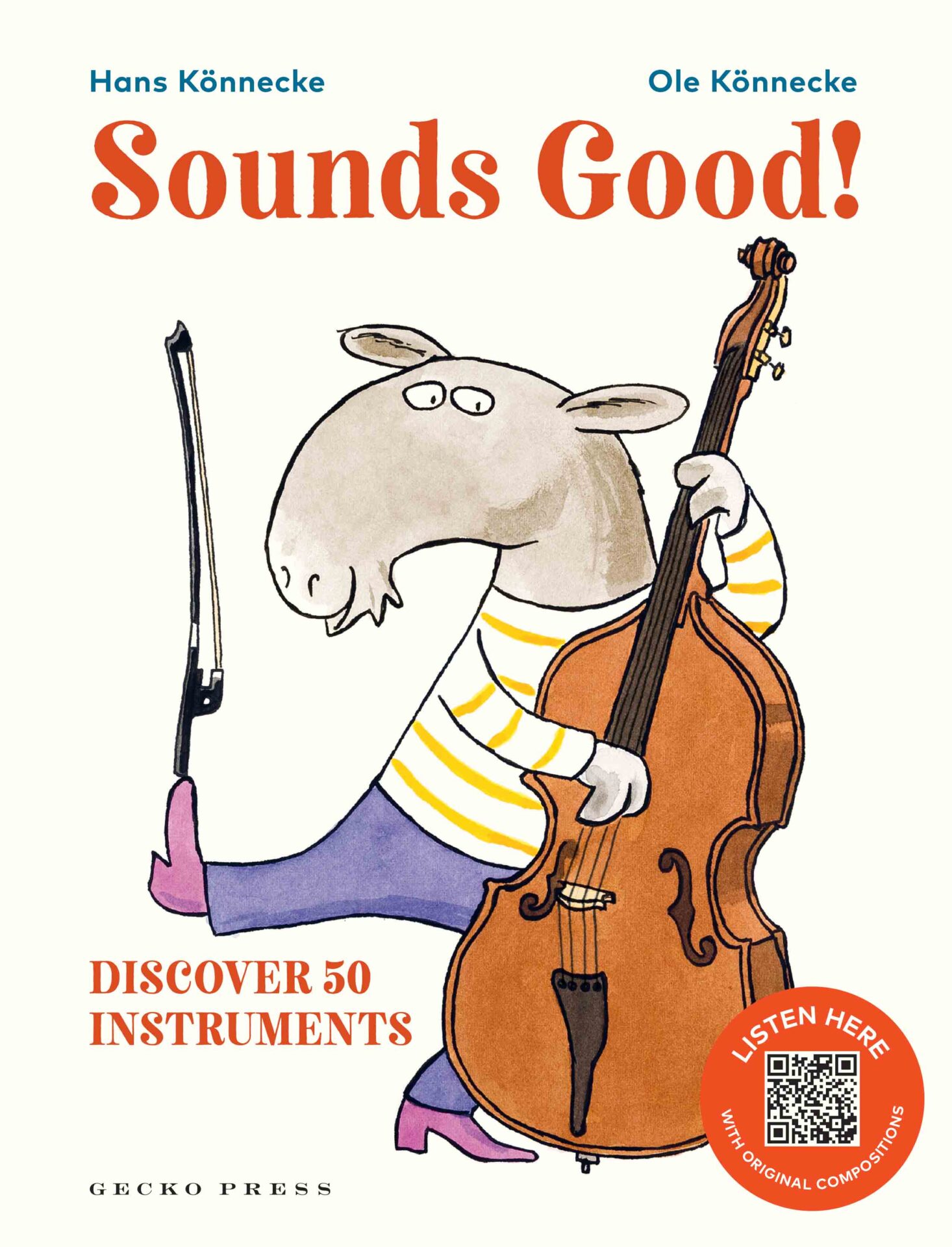

Ole Könnecke was born in 1961 and spent his childhood in Sweden. He now lives in Germany and has produced over 30 books, several of which have won international awards.
Hans Könnecke is an award-winning composer, instrumentalist and music producer for film,and theatre, who studied composition at the Academy for Music and Theater in Munich.
How did you decide which instruments to choose?
OLE: On one hand, we of course wanted to have all of the well known instruments. We made a list: guitar, piano, violin…it was maybe 20 or 25 instruments, that we couldn’t do without. And after that we
just played around a bit. Obscure instruments (lur), simple instruments (kazoo), regional instruments
(dulcimer). We wanted to show a large variety.
HANS: We want to show a variety of instruments to show how different music and playing an
instrument can be.

How did you match animals to instruments?
HANS: By fun!
OLE: In a couple of different ways. Sometimes it’s strange to have an especially magnificent animal (lion) play an especially humble instrument (triangle). Sometimes the animal and instrument look good together (bear and cello). At the beginning, I made a sketch of an animal and an instrument, and Hans then composed and recorded the music from that. I believe the clarinet was one of the first illustrations. Eventually Hans overtook me. At that point he was making the music first, and I reacted to what he had made. For example, that was the process for the banjo and the soprano voice. (Before this I had no inspiration for the soprano voice illustration. Only boring pictures of shattered glasses—I’m afraid I had a slight soprano bias. And then he created the music, and it was so gorgeous that I was immediately inspired to draw a beautiful illustration.)
You say in the introduction that you and Hans learned music unsystematically
—what do you think is the best way for children to learn music?
OLE: I think openness and variety is important. Children are inquisitive and they love learning. Maybe it is a good idea to listen to as much and as wide a variety of music as possible at home, without expectations or judgment. And no anxiety around listening to music that isn’t popular.
HANS: Finding out by yourself what sounds interesting to you without feeling like you have to only
listen to a certain type of music.
The classic groupings of instruments—wind, brass, string—are not often
mentioned. Why is that?
OLE: We wanted the book to be fun and playful. And we didn’t want the innate curiosity of children to be constrained by classifications. No rules. This book is primarily about showing all there is. For me it was especially important that the book was not like a school or educational book. Therefore the text is also relatively short. Better to write a bit less than a word too many.
HANS: The classic groupings of instruments automatically puts the instruments and music played on them into the context of classical music where these categories are used. But, for example, it’s possible to play the oboe without playing classical music. We want to stay away from those associations and constraints.

What would you like children to take from this book, and how have children
responded so far in your experience?
HANS: To play an instrument or make music in any way and to be open minded about it!
OLE: Have fun. Be adventurous. Try out things. Learn about instruments you didn’t know existed. The world is vast. Hans and I have now made a performance based on the book. We speak, show the illustrations and, above all, play the music. We also have a couple of instrumentalists with us, who play the respective pieces of music from the book live—a kind of mini concert. Hans makes a recording with the audience: the audience sings a long note and, while I talk about the kazoo and the jaw harp, Hans edits it on the computer. Then he plays the finished piece out loud, a composition that is based on just that audience note. The children especially liked hearing the tenor, the electric guitar and the violin compositions from the book. They are up for anything.
Sounds Good! Discover 50 Instruments | Available from all good bookstores
An interactive introduction to musical instruments, light-hearted, engaging and with 50 original compositions to listen to—from the kazoo to the bassoon.


